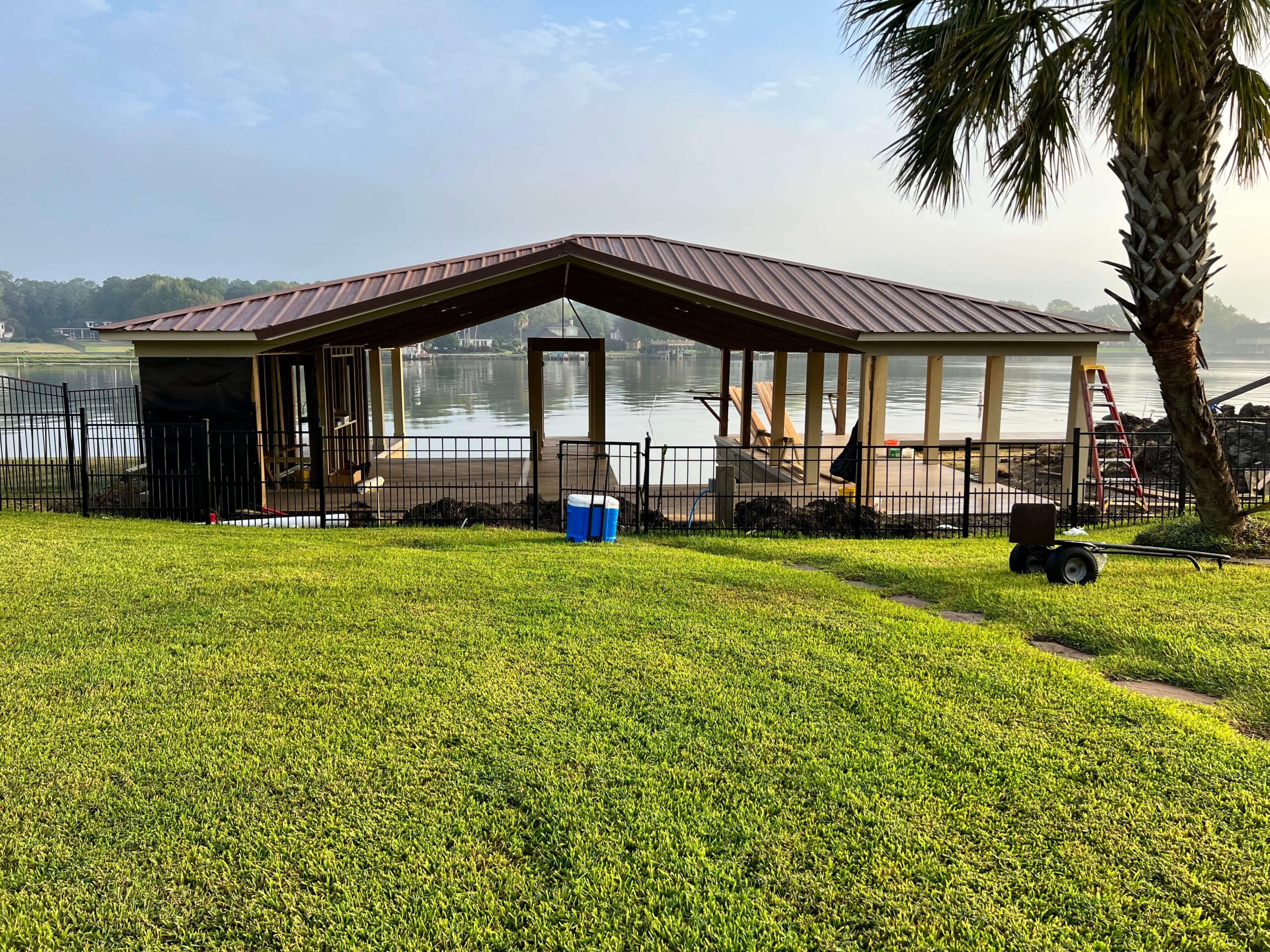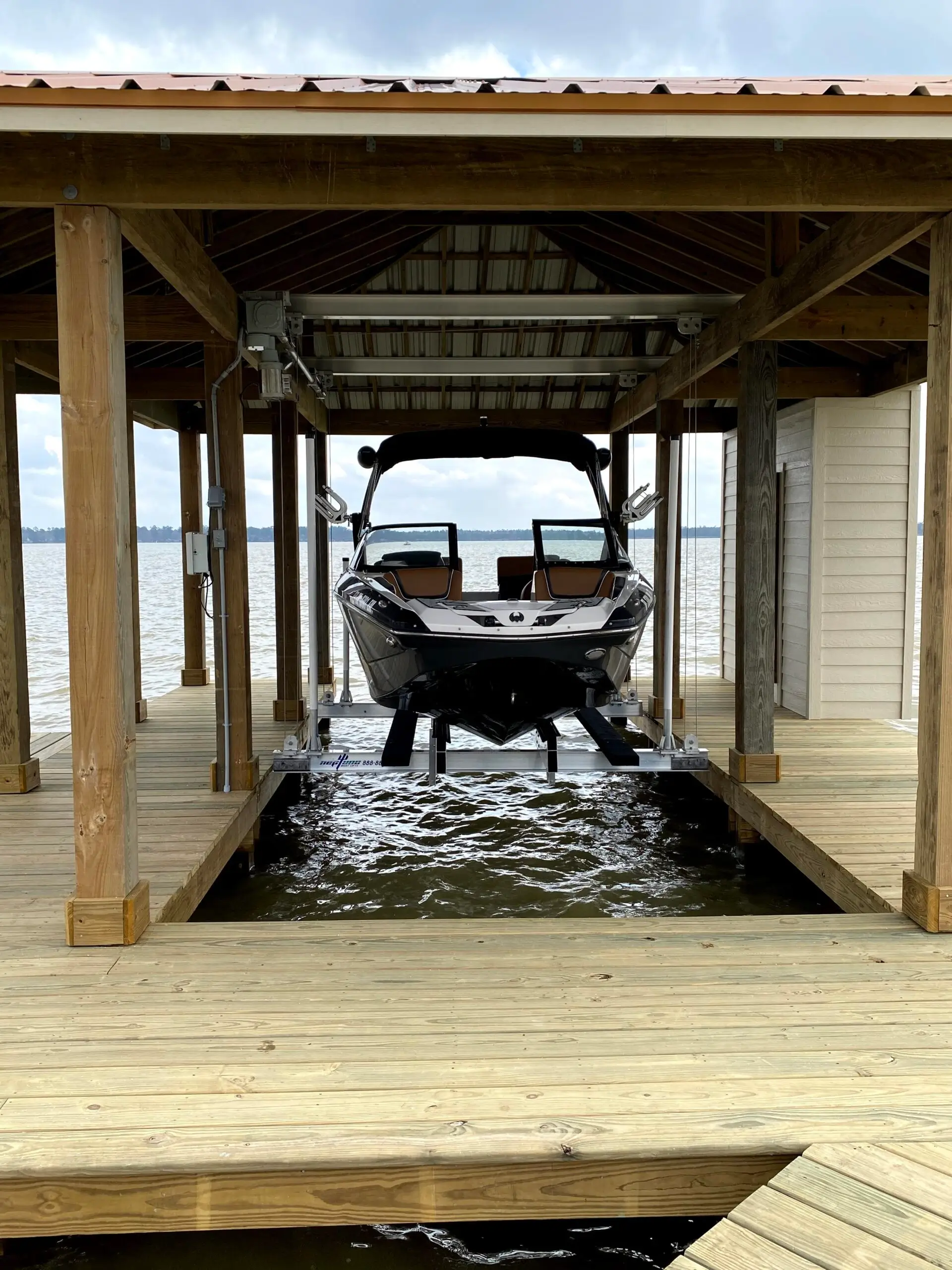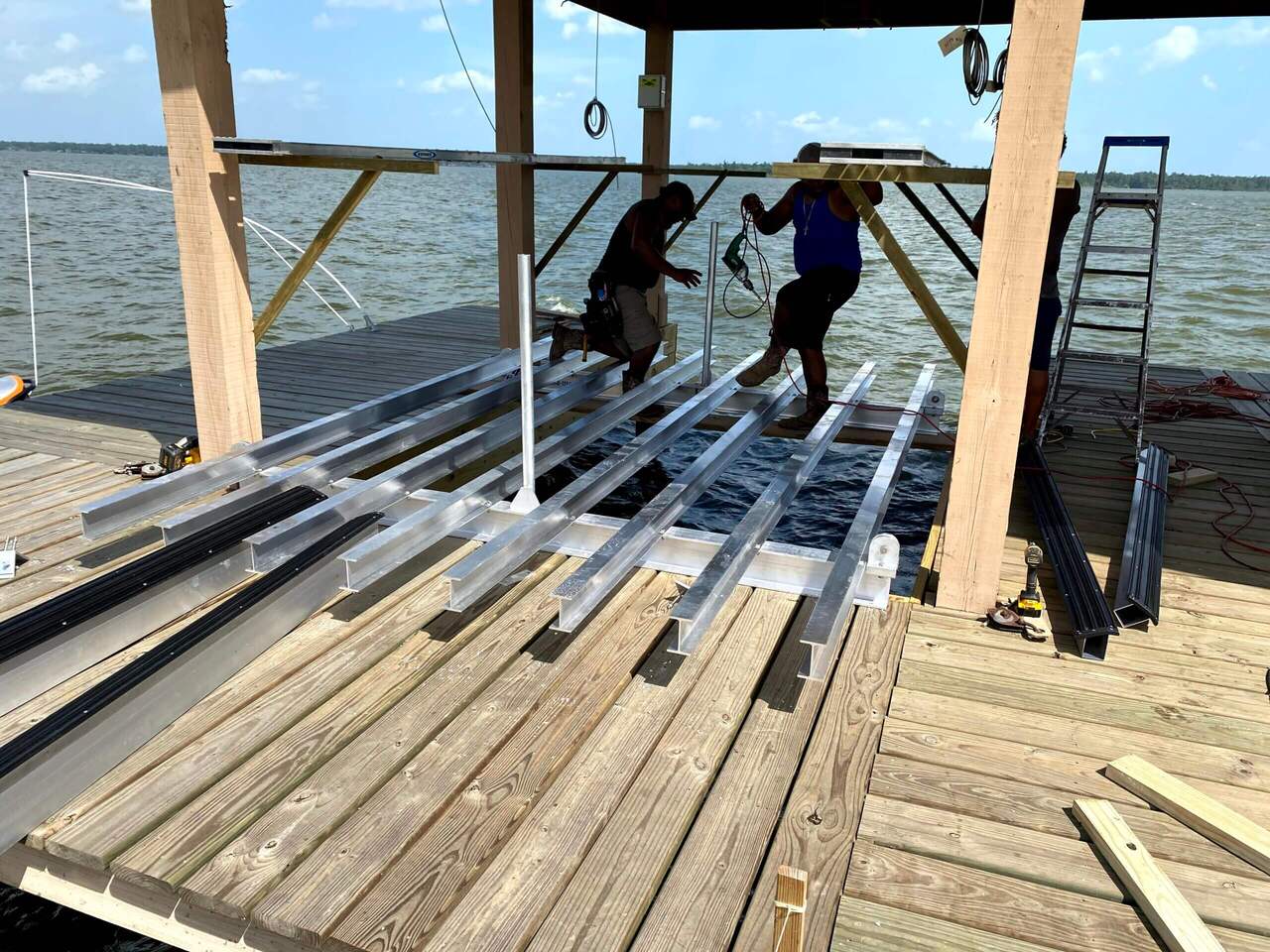No two docks are alike, and they won’t all come with the same price tag. Naturally a custom-designed stationary dock will always require a higher up-front investment than a Big Box store DIY floating dock, but there are other factors as well.
A final quote will require a detailed assessment of your specific location, water conditions, shoreline shape, and other needs. However, we can still help you understand the key factors that can influence the overall cost of your dock.
Materials
Materials will be one of the biggest factors dictating the cost of your dock. You need to consider the decking costs and the framing and piling costs.
Decking will generally use treated wood, composite, or aluminum. Aluminum lasts the longest and requires the least amount of maintenance, but is the most expensive option up front. Treated wood is the classic option but will require regular maintenance, and won’t last as long.
Composite is a nice middle-ground option. It’s more expensive than wood but it lasts longer and requires less maintenance. It’s made of recycled wood fibers and polypropylene or polyethylene. This is a highly eco-friendly option, and it even comes in a variety of colors.
As for framing, see our post on piling types to get a good understanding of your options here. In general, though, this will follow the same format: metal is more expensive but lasts longer and needs less maintenance.
Dock Size & Shape
Features
We rarely build simple, utilitarian docks. Most people want their dock to enhance their waterfront living experience. That means they’d like things like boat lifts, lighting, railings, ladders, built-in seating, and even the occasional waterslide.
We’re happy to add any feature you like. You just have to keep your budget in mind when selecting the features that are important to you.
The Site
The site is an area of dock design you don’t get much say in, and every site is different.
We look at four factors.
The first is water depth. Deeper water requires longer pilings, or, in some cases, different types of pilings. Extremely shallow water can present its own challenges as well. Water depth can present certain installation challenges that make your job more complex.
Conditions at your lakebed, riverbed, or seabed are the second condition we look at. Rocky beds and soft beds are the big ones: they can make installation more difficult and costly.
The third is prevailing water conditions. If the waters are routinely very rough, we’re going to recommend a more robust dock set up, maybe even more robust than the ones we routinely recommend for Houston’s constant exposure to severe weather conditions.
Finally, there’s permitting. Each county has its own set of regulations, and many municipalities have their own specific codes and ordinances. Building custom boat docks in Clearlake requires a different process than doing the same job on Lake Conroe. Timing and costs can vary greatly.
Get a Quote and a Design
Knowing these factors can help you decide how to adjust your design if you find the first idea isn’t quite within your budget. Our team is always here to help you create the dock of your dreams within your current constraints.
Ready to get started? Contact Dream Boat Docks today!





